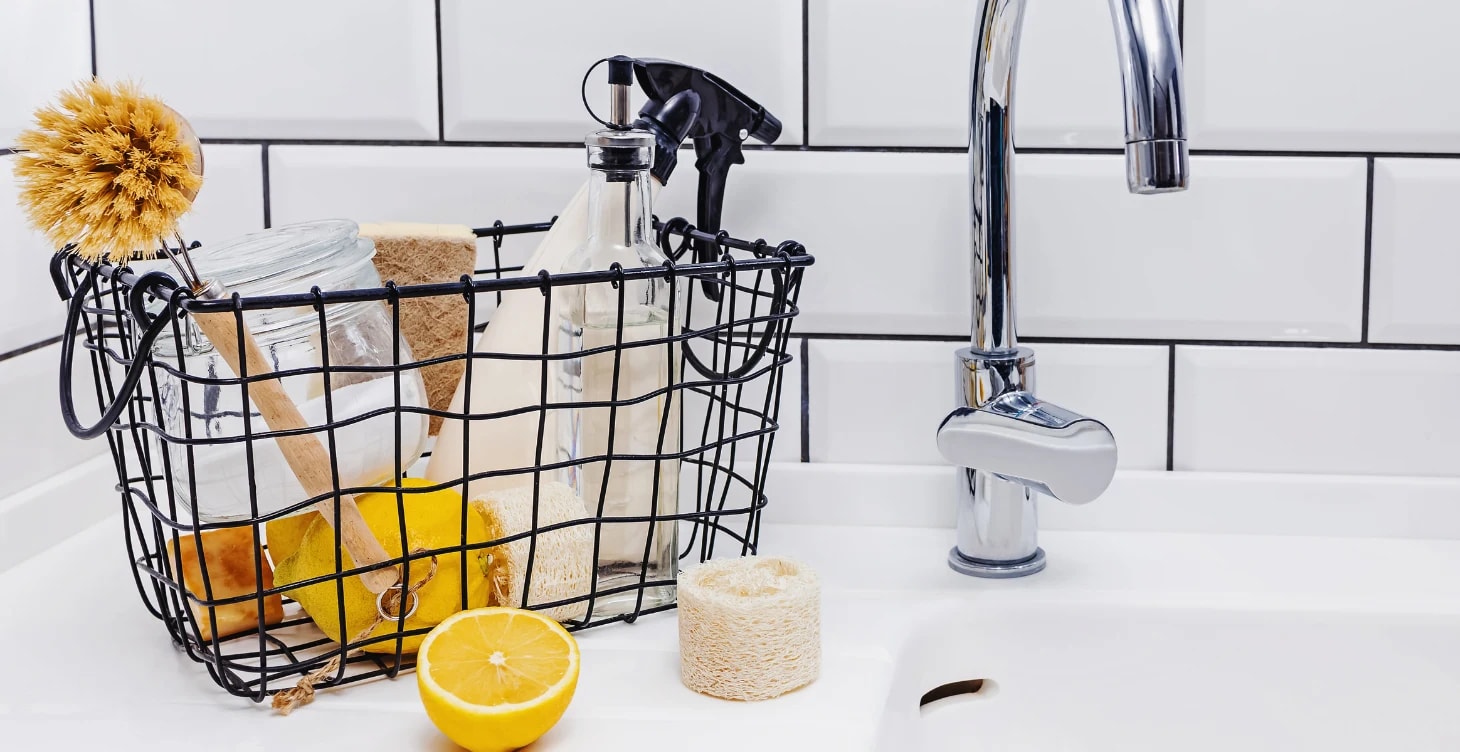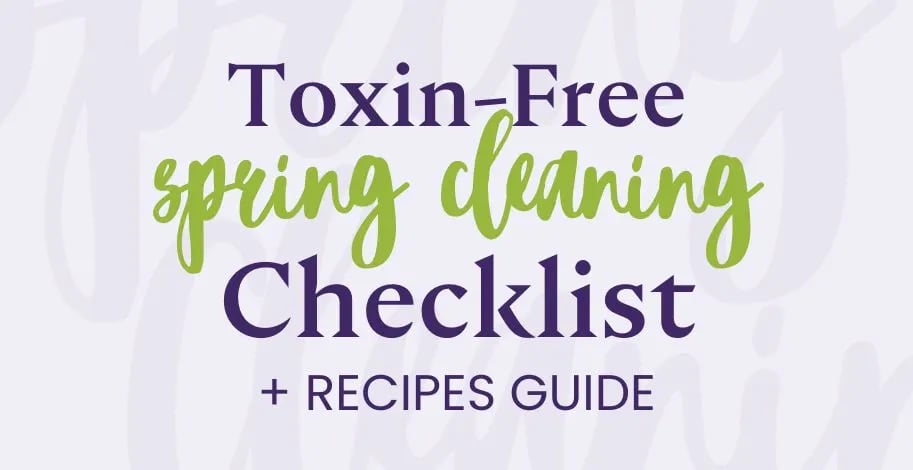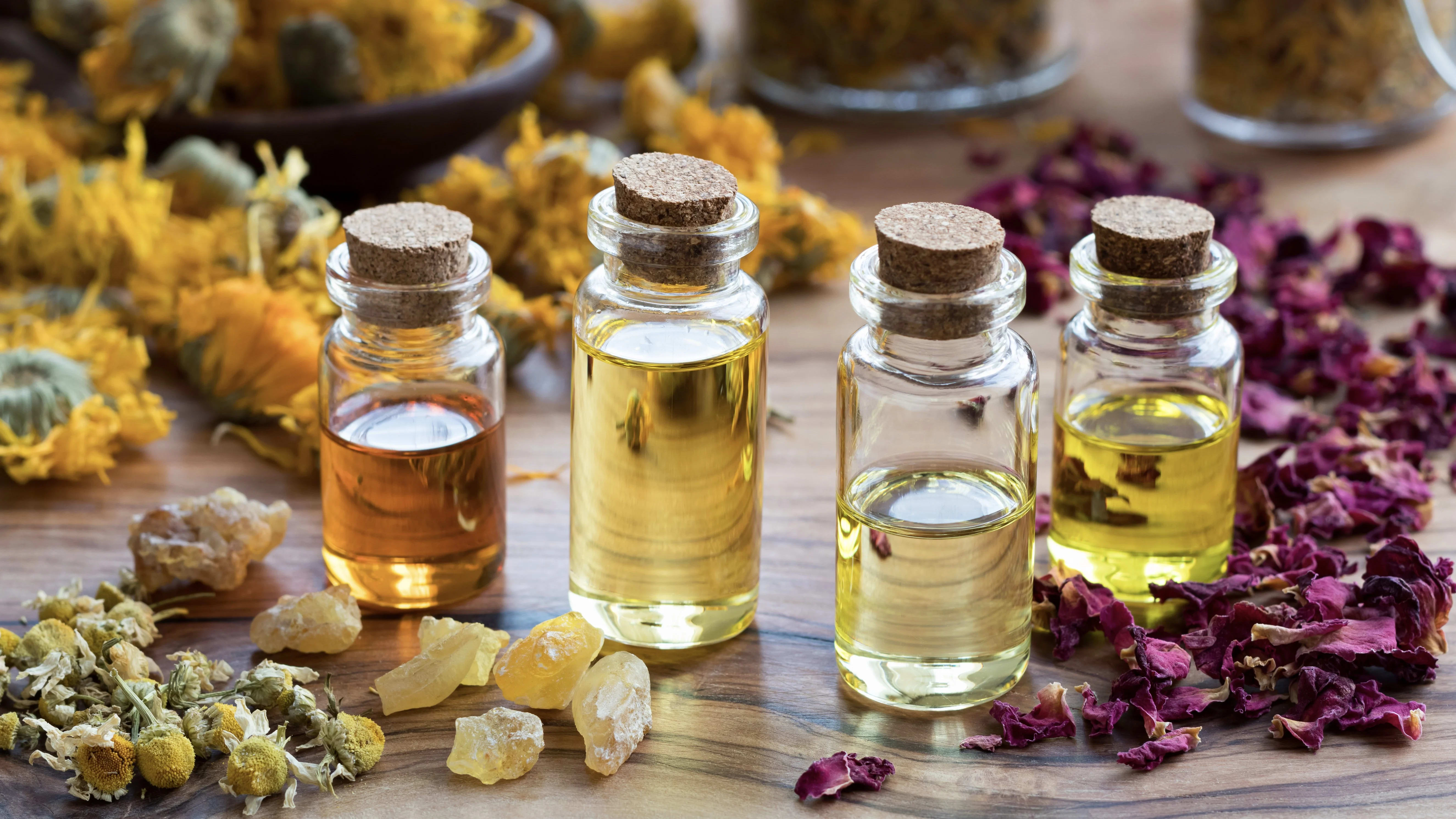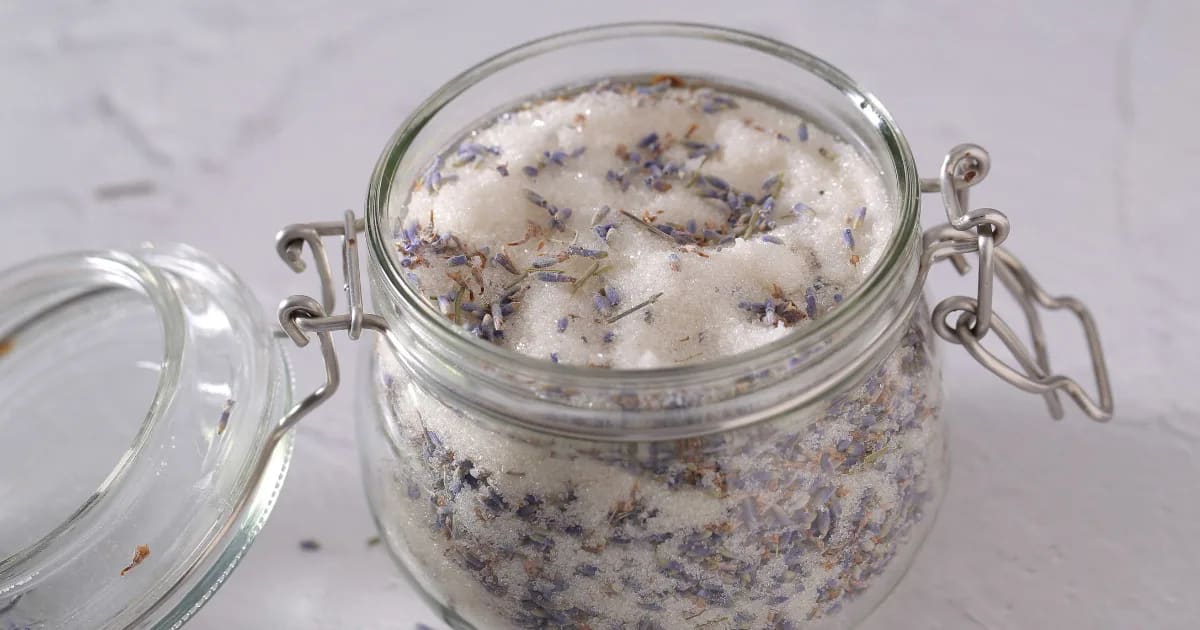DIY All-Purpose Cleaner with Essential Oils

The Scent of a Fresh Start
There’s something about spring that stirs the soul. It calls us to open the windows, shake out the dust, and make space for new beginnings. It’s a gentle invitation to new aspects of ourselves. This is how I see spring cleaning—a way to sweep away the heaviness of winter and fill our homes with lightness, clarity, and fresh energy. And what better way to do that than with the pure power of essential oils?
This spring, let’s skip harsh chemicals and synthetic fragrances. Nature has given us everything we need for a clean home.
This DIY Natural All-Purpose Cleaner is gentle, effective, and infused with the bright, uplifting scents of lemon and tea tree.
These are powerful essential oils for cleaning that bring antibacterial, antifungal, and grease-cutting power to every surface—plus they fill your home with a bright scent!
This recipe comes from our latest free offer, the “Non-Toxic Spring Cleaning Checklist + Recipes Guide” (which you can download here!)
After the recipe, I’ll share why these ingredients are so great for keeping your home clean naturally, and how you can customize this cleaner with different essential oils.
DIY Natural All-Purpose Cleaner Recipe
This gentle, Castile soap-based cleaner is perfect for wiping down countertops, sinks, appliances, and other hard surfaces. The Castile soap lifts dirt and grime, while lemon and tea tree oils provide natural antibacterial and antifungal properties. Adding white vinegar boosts its germ-killing and degreasing power.
You can swap the essential oils for any antimicrobial oils of your choosing. I’ll share ideas below!
Ingredients
1 cup Water
1/2 cup White Vinegar – optional, for added degreasing
1 tsp Castile Soap
10 drops Lemon Essential Oil (Citrus limon)
5 drops Tea Tree Essential Oil (Melaleuca alternifolia)
Directions
Combine all ingredients in a 16 oz glass or PET spray bottle.
Shake gently before each use.
Spray onto surfaces and wipe with a clean cloth.
Important: If you’re cleaning stone surfaces, leave the vinegar out of the blend, as it can etch stone surfaces or sealants. Make sure to spot test this cleaner on your surfaces before using it freely.
Store in a cool, dark place. This cleaner should last for 3 to 6 months if stored properly.
Why These Ingredients Work
The base ingredients in this blend are powerhouses for natural cleaning!
Castile Soap: Castile soap is a plant-based, multi-purpose cleanser that’s as gentle on your skin as it is on the planet. Made from olive oil, it’s free from harsh chemicals, fragrances, and toxins, making it an ideal choice for anyone looking to clean their home or care for their skin with the power of nature.
White Vinegar: A natural cleaning staple with impressive versatility. White vinegar’s acidity makes it effective at breaking down grease, dissolving mineral deposits, and killing bacteria. It’s a fantastic natural disinfectant and a great alternative to chemical-laden cleaners. But it should be avoided on stone surfaces like granite and marble, as its acidity can cause etching over time. Beyond cleaning, vinegar also helps neutralize odors, leaving your space fresh and toxin-free.
Customize Your Cleaner
You can really use any antimicrobial essential oils you like in this cleaner. Here are some of my top choices, along with why they work. I’m including lemon and tea tree in this list (even though I already mentioned them in the recipe), just to share why they’re so effective.
Cinnamon Bark (Cinnamomum verum)
Cinnamon bark oil is packed with cinnamaldehyde, a natural compound known for its broad-spectrum antimicrobial power (Usai & Di Sotto, 2023). It’s highly effective at combating germs, making it a great addition to all-purpose cleaners. Plus, its warm, spicy scent adds a cozy touch to your home—especially in the cool evenings of spring as the weather changes.

Eucalyptus Oil (Eucalyptus globulus)
Eucalyptus oil has a crisp, invigorating aroma that makes any room feel instantly refreshed! It’s a natural air purifier, helping to neutralize airborne germs and allergens thanks to its high content of 1,8-cineole (Mahumane et al. 2016; Kordali et al. 2005). It’s an excellent addition to cleaning blends, especially in spaces where fresh, clean air is a priority. Eucalyptus can even help you breathe easier, helping to calm inflammation in airways.

Lavender Oil (Lavandula angustifolia)
While lavender oil is most well known for its soothing scent, it’s actually an incredibly versatile oil! It brings gentle yet effective antimicrobial power to your cleaning routine (Fisher & Phillips, 2006). Linalool, its key component, helps combat bacteria and viruses, making it a great choice for surfaces in bedrooms, nurseries, or anywhere you want a peaceful, clean environment.

Lemon Oil (Citrus limon)
Lemon oil is a powerhouse when it comes to cutting through grease and grime. Packed with d-limonene, a natural solvent, it helps lift stubborn messes and neutralize odors, leaving your home smelling fresh and citrusy (it’s a perfect choice for the kitchen!). d-Limonene is also antimicrobial (Lang & Buchbauer, 2012), adding disinfecting power to your degreasing blends. Lemon’s bright, energizing aroma makes cleaning more fun!

Peppermint (Mentha × piperita)
Cool, crisp, and refreshingly clean, peppermint oil is a natural antimicrobial (Saad, Muller, and Lobstein, 2013) that also helps deter pests like ants and spiders. Thanks to its high menthol content, it brings an energizing scent to any space while working hard to eliminate germs and odors. (Learn more ways to use peppermint oil!)

Tea Tree Oil (Melaleuca alternifolia)
A natural germ-fighter, tea tree oil is prized for its potent antibacterial, antiviral, and antifungal properties (Carson, Hammer, and Riley, 2006). It’s particularly useful in damp areas like bathrooms, where mold and mildew can thrive. Adding tea tree oil to your cleaning routine helps prevent buildup while keeping surfaces fresh and sanitary. (Get a sanitizing tea tree spray recipe here!)

Make Spring Cleaning Effortless!
If you love this DIY cleaner, you’ll also love my Toxin-Free Spring Cleaning Checklist + Recipes Guide.
This complimentary guide walks you through every room of your home, giving you simple, effective ways to refresh your space naturally. The guide is overflowing with recipes—from versatile blends you’ll want to keep in your cleaning cabinet year-round, to more specific recipes for targeted uses throughout your home, like a stainless steel polish, oven cleaner, and sink scrub.
Let’s embrace the scent of fresh beginnings!

My Takeaway
Knowing your home is truly fresh brings deep peace. You can relax into an environment free of harsh chemicals and filled instead with the bright, invigorating scents of nature. Lemon slices in sunlight, eucalyptus leaves after the rain, the grounding warmth of cinnamon—these scents transform an everyday task into something grounding and uplifting.
As you wipe down counters and refresh your space, know that you’re making room for something new. You’re setting the stage for fresh energy, new ideas, and open windows filled with spring air.
Happy cleaning—and happy fresh starts.
REFERENCES
Carson, C. F., Hammer, K. A., & Riley, T. V. (2006). Melaleuca alternifolia (tea tree) oil: a review of antimicrobial and other medicinal properties. Clinical microbiology reviews, 19(1), 50-62.
Fisher, K., & Phillips, C. A. (2006). The effect of lemon, orange and bergamot essential oils and their components on the survival of Campylobacter jejuni, Escherichia coli O157, Listeria monocytogenes, Bacillus cereus and Staphylococcus aureus in vitro and in food systems. Journal of Applied Microbiology, 101(6), 1232-1240.
Kordali, S., Cakir, A., Mavi, A., Kilic, H. and Yildirim, A. (2005) Screening of chemical composition and antifungal and antioxidant activities of the essential oils from three Turkish Artemisia species. Journal of Agricultural and Food Chemistry 53, 5, 1408-1416.
Lang, G. and Buchbauer, G. (2012) A review on recent research results (2008-2010) on essential oils as antimicrobials and antifungals. A review. Flavour and Fragrance Journal 27, 13-39.
Mahumane, G. D., van Vuuren, S. F., Kamatou, G., Sandasi, M., & Viljoen, A. M. (2016). Chemical composition and antimicrobial activity of Eucalyptus radiata leaf essential oil, sampled over a year. Journal of Essential Oil Research, 1-14.
Saad, e., Hussien, R., Saher, F., & Ahmed, Z. (2006). Acaricidal activities of some essential oils and their monoterpenoidal constituents against house dust mite, Dermatophagoides pteronyssinus (Acari: Pyroglyphidae). Journal of Zhejiang University. Science. B, 7(12), 957–962. https://doi.org/10.1631/jzus.2006.B0957
Usai, F., & Di Sotto, A. (2023). trans-Cinnamaldehyde as a Novel Candidate to Overcome Bacterial Resistance: An Overview of In Vitro Studies. Antibiotics (Basel, Switzerland), 12(2), 254.https://doi.org/10.3390/antibiotics12020254





